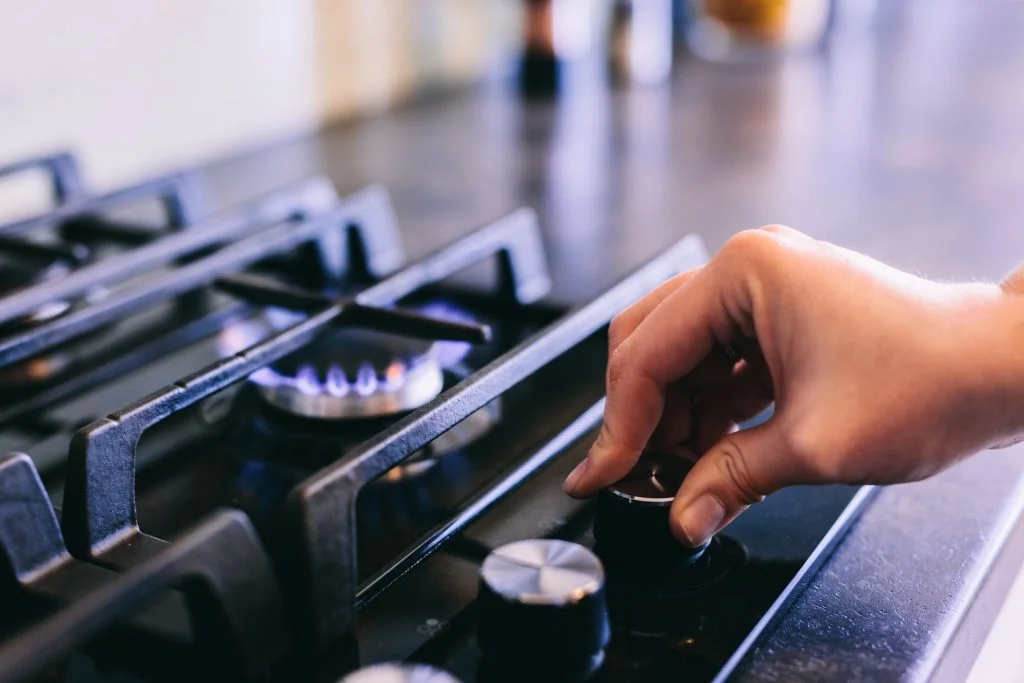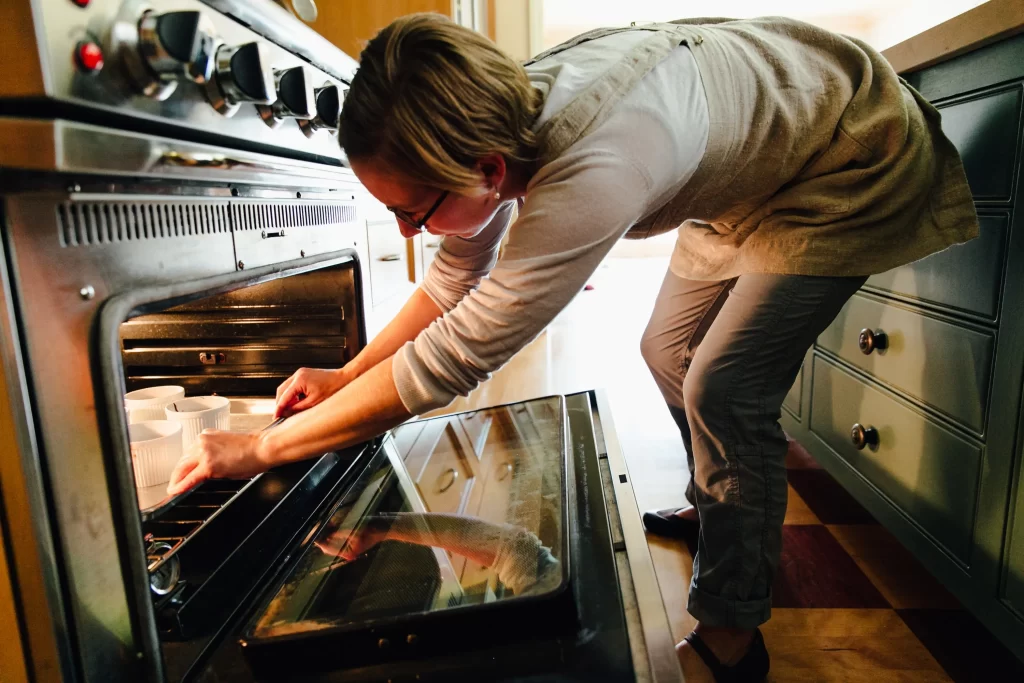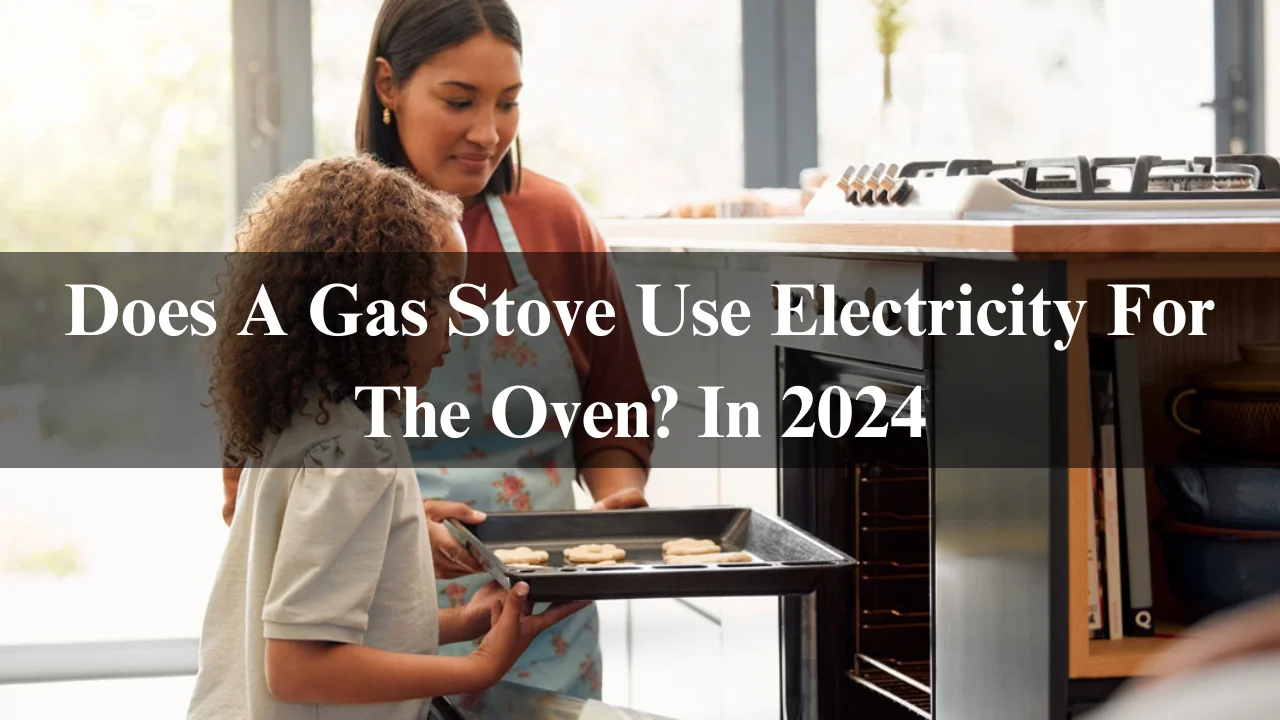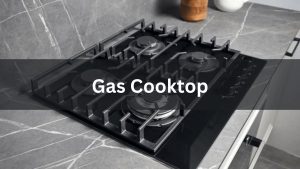Are you considering a switch to gas cooking but wondering if that means saying goodbye to electricity in your kitchen? Well, you’re not alone in this culinary conundrum. Many home cooks are curious about how gas stoves operate and whether they rely on electric power for baking, broiling, or roasting.
With all the talk about energy efficiency and cost savings associated with gas appliances, it’s essential to understand what powers your oven. Join us as we explore the ins and outs of gas stove functionality, safety concerns, chef preferences, and more! Your journey into the world of cooking with gas starts right here.
Table of Contents
Does a gas stove oven need electricity?
A gas stove oven operates primarily on gas, which means it does not need electricity for heating. The flames generated by burning natural gas or propane provide the heat required for cooking.
However, some components do require electricity to function. For instance, many modern gas ovens come equipped with electronic ignition systems instead of pilot lights. When you turn it on, these igniters use a small amount of electricity to create a spark that lights the burner.
Additionally, features like digital displays and timers rely on electrical power. So, while the core cooking process is driven by gas, certain conveniences utilise electricity to enhance your cooking experience.
Is the oven on a gas stove electric?
The oven on a gas stove typically operates using natural gas or propane. This means the primary heat source comes from combustion rather than electricity. However, there are exceptions.
Many modern gas ovens require a small amount of electricity for certain features. For instance, electronic ignition systems use electric sparks to ignite the gas safely and efficiently. With this feature, you might be able to rely on a match or lighter.
Additionally, many appliances come equipped with electric controls for temperature settings and timers. These components enhance convenience but do not impact the oven’s core heating method.
So, while most functions depend on gas as fuel, some electrical elements support usability and safety in your cooking experience. If you’re curious about specific models’ power requirements, it’s essential to check before making any decisions.
Is the gas stove oven safe?
Safety is crucial when using a gas stove oven. Gas ovens are generally safe if used correctly and maintained properly. Always ensure that your kitchen is well-ventilated to prevent the buildup of carbon monoxide.
Regular checks on connections help, too. Look for leaks around the gas line, which can pose serious risks. A simple soap-and-water solution can identify any issues; bubbles indicate a leak.
Using the oven’s features as intended enhances safety. Follow recommended temperature settings and cooking times guidelines.

Also, be mindful of flammable materials nearby while cooking. Keeping towels or paper near open flames isn’t wise.
Consider investing in a carbon monoxide detector for peace of mind, especially in homes with gas appliances. It adds an extra layer of security against potential hazards associated with gas usage.
What are the disadvantages of a gas oven?
While popular among many cooks, gas ovens have a few disadvantages. One significant concern is uneven heating. Unlike electric ovens, which provide consistent warmth, gas can create hot spots.
Another drawback is the potential safety hazards associated with gas. Leaks can occur, leading to health risks or even explosions if not properly maintained. Regular checks are essential to ensure safety in the kitchen.
Cleaning can also be more challenging with gas ovens. The burners and grates tend to accumulate grease and food particles, making them harder to maintain than their electric counterparts.
There’s an environmental impact to consider. Gas usage contributes to carbon emissions, which can concern eco-conscious households looking for greener alternatives in cooking appliances.
What power does a gas oven require?
A gas oven primarily generates heat using natural gas or propane. However, specific components require a small amount of electricity.
The ignition system is one key area where electricity comes into play. Most modern gas ovens use electric igniters to light the burner quickly and safely.
Additionally, many models’ timers, temperature controls, and digital displays depend on electrical power. These features enhance user convenience but are optional for essential operations.

In terms of wattage, a typical gas oven might need 120 to 240 volts for these electronic functions. While you can operate the oven without plugging it in directly like an electric range, some systems draw from your home’s electrical supply.
So yes, while gas may fuel the heart of cooking, a little electricity ensures everything runs smoothly.
How does a gas stove oven work?
A gas stove oven uses natural gas or propane as its fuel source. When the oven is turned on, a valve opens to allow gas to flow into the burner.
An igniter sparks and lights the gas, creating a flame. This flame generates heat that warms up the oven’s interior for cooking.
A thermostat controls temperature. It sends signals to adjust the flow of gas, maintaining the desired baking temperature.
Gas ovens often feature convection fans that circulate hot air for even cooking. This technology helps reduce cooking times and enhances food quality.
You may notice pilot lights in some older models. These stay lit continuously for safety and instant ignition when needed. Newer versions tend to have electronic ignitions instead, providing efficiency while eliminating continuous gas burning.
What is the difference between a gas stove and a gas oven?
A gas stove and oven serve different purposes in the kitchen, though they often work together. A gas stove typically refers to a cooktop with burners where you prepare meals using pots and pans. It offers instant heat control, allowing for quick adjustments while cooking.
In contrast, a gas oven is an enclosed space for baking or roasting food. It uses gas flames to generate consistent heat throughout the cavity, ensuring even cooking.
While both appliances use natural gas as their energy source, their designs cater to specific culinary techniques. The stove excels at stovetop cooking methods like boiling and sautéing, whereas the oven is perfect for baking bread or casseroles that require more time and steady temperatures.
Understanding these differences can help home chefs utilise each appliance effectively in their meal preparations.
Why do chefs prefer gas ovens?
Chefs often favour gas ovens for their precise temperature control. The ability to adjust the flame instantly allows for quick responses while cooking. This agility is vital in professional kitchens where timing is everything.
Gas ovens heat rapidly, significantly reducing prep time. When a chef needs immediate heat, gas is delivered without delay.
The visual aspect of flames also plays a role in culinary mastery. Chefs can see and gauge how much heat they are applying at any moment, enhancing their cooking techniques.

Moreover, gas ovens tend to provide better moisture retention during baking. Many chefs appreciate baked goods that are perfectly risen and evenly cooked.
Another reason behind this preference is consistency. Once they’ve mastered the nuances of their equipment, chefs rely on the reliable performance of gas ovens day after day.
Is the oven electric on a gas stove?
Many people wonder if the oven on a gas stove requires electricity. The answer is that it depends on the design of the appliance. Most traditional gas ovens primarily rely on gas for heating.
However, many modern models incorporate electrical components. For instance, they may use electricity to power timers, igniters, and lights.
Turning on a gas oven often requires an electric spark to ignite the burner safely. Some advanced versions feature convection fans that circulate hot air for even cooking—these require electricity, too.
So, while the primary heat source is gas, various elements within a gas oven utilise electricity. This blend allows for enhanced functionality without compromising efficiency in cooking methods.
Do gas ovens turn off automatically?
Like some electric models, gas ovens typically do not have an automatic shut-off feature. This means once you turn on the stove, it will remain lit until you manually switch it off.
However, many modern gas ovens have safety features designed to prevent accidents. Some models include timers that alert you when your food is ready or remind you to check the oven after a certain period.
If you’re using a gas oven for long cooking times, it’s essential to stay vigilant. Setting a separate timer on your phone or kitchen clock can help you remember your meal.
Safety should always be a priority. Regular maintenance and checks are vital to keep everything running smoothly and safely while cooking with gas.
How do you use a gas stove as an oven?
Using a gas stove as an oven is relatively straightforward. First, ensure your stove has an oven feature; most modern models do.
Preheat the oven by turning the temperature dial to your desired setting. The flame will ignite and heat the interior quickly.
Next, place your dish on the rack inside. Make sure it’s centred for even cooking. You can use any oven-safe cookware made from materials like glass or metal.

Monitor your food regularly through the window if available. Adjustments might be necessary since gas ovens can sometimes have hot spots.
Remember to turn off the burner after you’re done cooking! It’s essential for safety and energy efficiency in your kitchen routine.
Can an oven be both gas and electric?
Yes, an oven can be both gas and electric. These hybrid models combine the best of both worlds, offering flexibility in cooking methods.
Typically, the stove top operates on gas while the oven uses electricity. This setup allows for precise temperature control when baking or roasting, which many chefs appreciate.
Some designs even feature dual-fuel functionality. For example, you can get a gas range with an electric convection oven that enhances heat distribution.
This versatility accommodates various cooking styles and preferences. Chefs who love searing meat may prefer gas, while those focused on consistent baking results might lean towards electric.
Hybrid ovens cater to diverse culinary needs without sacrificing performance or taste.
Why do people use gas ovens?
Gas ovens are popular for several reasons. Many home cooks appreciate the precise temperature control they offer. The immediate response to adjustments allows for better cooking results.
Efficiency is another factor. Gas ovens heat up quickly and maintain consistent temperatures, making them ideal for various recipes. This can lead to energy savings over time.
Flavour also plays a significant role in their appeal. Cooking with gas often enhances the taste of roasted foods, as it promotes even browning and crisping.
Additionally, many chefs swear by gas because it provides visual feedback through flames. This helps gauge heat levels instantly while cooking.
Some people prefer using gas due to its reliability during power outages. As long as there’s fuel available, meals can be prepared without interruption or inconvenience.
Do gas ovens always smell?
Gas ovens can sometimes emit a smell, mainly when first used or if there are issues. A familiar odour is a natural gas, which has an added scent for safety reasons—often likened to rotten eggs. If you notice a strong or persistent smell of gas, it’s crucial to turn off the oven and ventilate the area immediately.
Regular maintenance can minimise unpleasant odours. Cleaning spills and ensuring proper ventilation will keep your cooking space fresh. It’s also essential to check for leaks periodically and ensure all connections are secure.
While many cooks appreciate the efficiency of gas ovens, they should remain aware of any strange smells during use. Attention to these details ensures a safer cooking environment while enjoying delicious meals prepared with this popular kitchen appliance.
Related Articles:
Does a gas cooktop need electricity? Complete Info 2024
Gas Cooktop Safety Tips And Precautions Complete Info 2024
I Made the Switch from Gas to Electric Cooking
Conclusion
In conclusion, gas stoves and ovens primarily rely on gas for cooking, but they also incorporate specific electrical components for added convenience and safety. While the core function of a gas oven is heating that does not require electricity, modern features like electronic ignition, digital displays, and timers do. This gas and electric power blend ensures a more efficient and user-friendly cooking experience.
However, it’s essential to maintain your gas stove properly to prevent any safety risks, such as gas leaks, and to be mindful of its limitations during power outages. Ultimately, understanding how gas ovens work can help you make informed decisions in the kitchen, balancing the benefits of gas cooking with the conveniences of modern technology.
FAQs
Can I use my gas oven during a power outage?
No, most modern gas ovens require electricity for ignition and control so that they won’t function during a power outage.
Is it safe to light a gas stove manually during a power outage?
While it’s possible to light the burners with a match, it’s not recommended for safety reasons. Always exercise caution and follow the manufacturer’s guidelines.
Does the oven light use a lot of electricity?
No, the oven light uses minimal electricity and has a negligible impact on your energy bill.
Why does my gas stove have a digital display if it runs on gas?
The digital display and electronic controls are powered by electricity to provide precise temperature settings, timers, and other convenient features.




